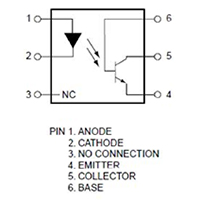graying.geek
Well-Known Member
Looking for some best-practices electrical advice. I've been doodling with Mycodo on a Raspberry Pi for data collection and monitoring, but would like to transition to using the Pi to control some of the high power devices in the grow room; e.g. lights, heater, chiller, etc. My grow room is 6' x 4' x 8' with an 80 liter hydro reservoir, 1200W heater, 400W of LED, 39W UV light, dehumidifier and chiller. Everything is 120V.
I expect my electrical skill level is slightly above average; I install breakers, new circuits, outlets and switches without problems. I had a 100A subpanel installed in my grow room, so adding/changing single-phase breakers, circuits, etc, is a piece of cake. My weakness, which become obvious pretty quickly, is in the theory, so don't expect me to explain "inductive load" or how a SS relay works, because I don't know. I realize not understanding the "whys" can get me into trouble pretty quickly, hence I'm looking for some seasoned advice.
Everything is surface mount from the breaker box. My intent is to run 12-2 Romex through conduit from the breaker box to a "project box" containing the pi and relays (I expect to need a fan), then 12-2 through conduit to the respective outlets. I'll combine if it makes sense, but the default will be for each controlled outlet or outlet cluster to have it's own relay and its own 12-2 wire pull backed by a 15-A or 20-A fuse in the breaker box. I have plenty of slots in the box so I plan to use 1 circuit to back each relay, and run multiple circuits through the same conduit both to and from the project box.
Here's the questions that bubble up:
1) Do you see any safety issues?
2) Should I use GFCI outlets?
3) I understand that the SSR-40DA relays work well (?) for these applications, but may not trigger at the 3.3V signal from the Pi. Is it advisable to use one of the small 8-relay boards to use as a 5V trigger for the SSR-40DA?
4) I realize some of this is over done, but it's what I have on hand. Will it cause any issues now or ever?
5) What am I missing?
I expect my electrical skill level is slightly above average; I install breakers, new circuits, outlets and switches without problems. I had a 100A subpanel installed in my grow room, so adding/changing single-phase breakers, circuits, etc, is a piece of cake. My weakness, which become obvious pretty quickly, is in the theory, so don't expect me to explain "inductive load" or how a SS relay works, because I don't know. I realize not understanding the "whys" can get me into trouble pretty quickly, hence I'm looking for some seasoned advice.
Everything is surface mount from the breaker box. My intent is to run 12-2 Romex through conduit from the breaker box to a "project box" containing the pi and relays (I expect to need a fan), then 12-2 through conduit to the respective outlets. I'll combine if it makes sense, but the default will be for each controlled outlet or outlet cluster to have it's own relay and its own 12-2 wire pull backed by a 15-A or 20-A fuse in the breaker box. I have plenty of slots in the box so I plan to use 1 circuit to back each relay, and run multiple circuits through the same conduit both to and from the project box.
Here's the questions that bubble up:
1) Do you see any safety issues?
2) Should I use GFCI outlets?
3) I understand that the SSR-40DA relays work well (?) for these applications, but may not trigger at the 3.3V signal from the Pi. Is it advisable to use one of the small 8-relay boards to use as a 5V trigger for the SSR-40DA?
4) I realize some of this is over done, but it's what I have on hand. Will it cause any issues now or ever?
5) What am I missing?

